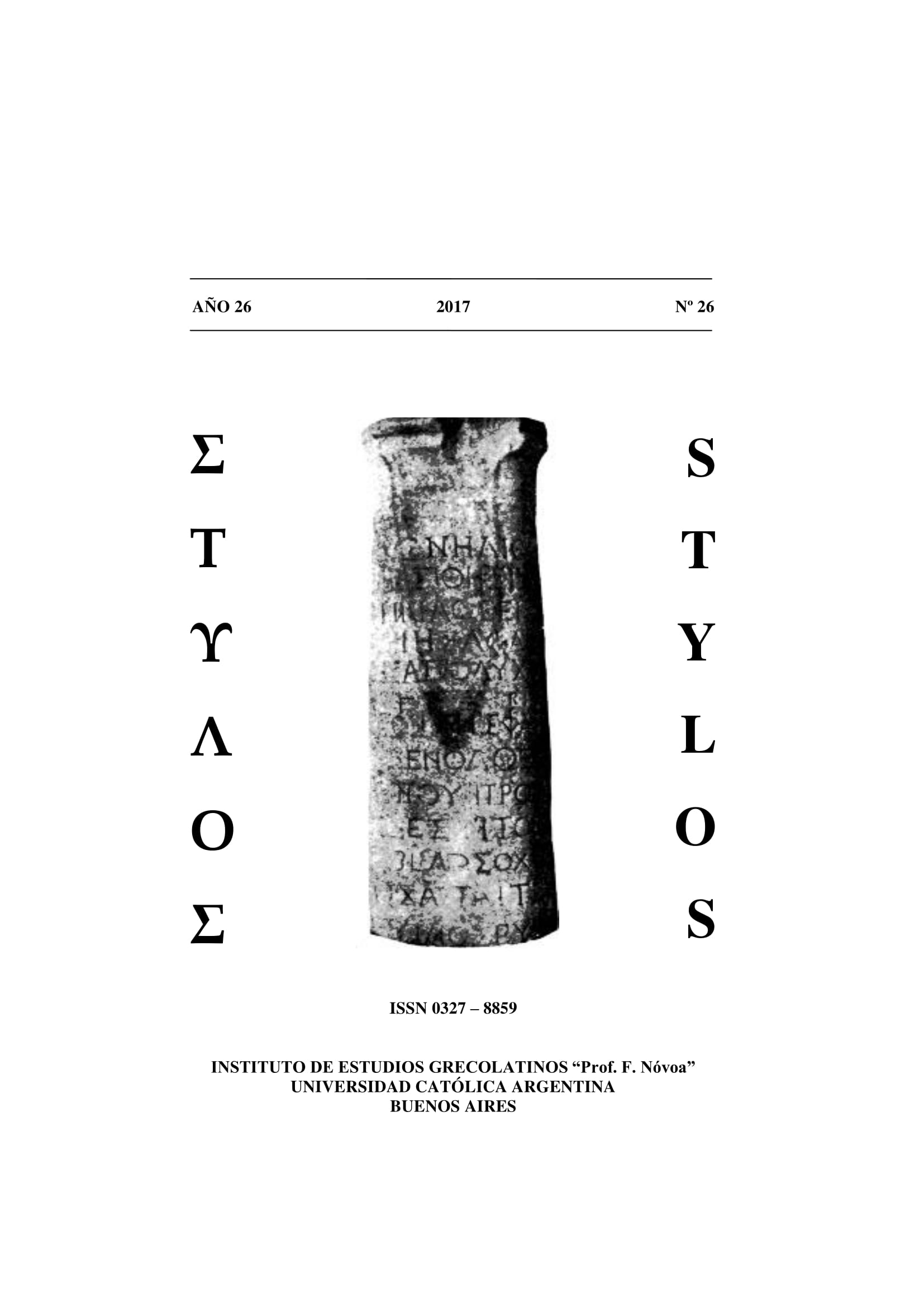“TALES SON SUS ENCANTOS” (TROYANAS 893): HELENA EN HOMERO Y TROYANAS DE EURÍPIDES
Palabras clave:
Helena-Homero- Eurípides-ambigüedad-retóricaResumen
El trabajo se propone analizar la figura de Helena en los poemas homéricos y en Troyanas de Eurípides. En la Ilíada es un personaje del cual se habla en numerosos pasajes, pero se muestra en persona sólo en seis de ellos como un ser sufriente que se increpa a sí mismo por los males ocurridos. En la Odisea es una excelente anfitriona, pero el discurso de Menelao revela su carácter engañoso y ambiguo. En ambos poemas la figura de Helena se asocia con el tema de su responsabilidad con respecto a la guerra de Troya: ¿es ella responsable o recae en los dioses las numerosas muertes de aqueos y troyanos? Eurípides plantea este interrogante en su tragedia Troyanas que muestra a una Helena enfrentada en un agón con Hécuba. El poeta trágico toma la fuente homérica y dota a ambos personajes de una habilidad retórica, más propia de la Atenas del siglo V que la de la Troya homérica.Descargas
Citas
DICCIONARIOS
BAILLY, A (1950) Dicctionnaire grec-francais, Paris, Hachette.
LIDDELL, HENRY AND SCOTT, ROBERT (1968) Greek-english Lexicon, Ox-ford University Press.
EDICIONES
Euripides Trojan Women (1986), S. Barlow (ed.) Warminster, England, Aris & Phillips.
Euripidis Fabulae (1981), J. Diggle, (ed), Oxford University Press.
Homère Odysée (1875), Batrachomyomachie, Hymnes, Epigrammes,. A.Pierron (ed) . Paris, Hachette.
Homeri opera (1938-9) D.Monro-T.Allen (eds.), Oxonii, Clarendoniano, 1938-9.
The Iliad vol. I (1960), W. Leaf (ed). Amsterdam, Adolf Hakkert Publis-hing.
BIBLIOGRAFÍA
ANDRADE, N. (2003) “Discurso político en el Áyax de Sófocles”, en Discurso y poder en la tragedia e historiografía griegas, Buenos Aires, Eudeba, pp. 13-40.
BALLABRIGA, A. (1998) Les fictions d´ Homère, Paris, Presses Universi-taires de France.
BLONDELL, R. (2010) “Bitch that I am”. Self- Blame and Self-Assertion in the Iliad”, TAPhA 140/1, pp. 1-32.
CAVALLERO, P. (2014), Leer a Homero, Ilíada, Odisea y la mitología griega, CABA, Editorial Quadrata.
CHANTRAINE, P. (1999) Dictionnaire étymologique de la langue grecque, Paris, Klincksieck.
DODDS, E. R. (1981) Los griegos y lo irracional, Madrid, Alianza Edi-torial.
GALLEGO, J. (2005-2006) “Los dissoi logoi en las Nubes de Aristófanes”. Esquema formal y punto de detención de la proliferación discusiva”, Circe 10; pp. 177-93.
GILMARTIN, K (1970) “Talthybius in the Trojan Women” AJPh 91/1, pp. 213-22.
LLOYD, M. (1984) “The Helen Scene in Euripides´ Troades”, CQ 34/2, pp. 303-13.
MERIDOR, R. (2000) “Creative Rhetoric in Euripides´ Troades: Some notes in Hecuba´s Speech”, CQ 50/1, pp. 16-29.
O´NEILL E. (1941) “The Prologue of the Troades of Euripides”, TAPhA 72, pp. 288-322.
PERELMAN, CH. Y OLBRECHTS-TYTECA, L. (1994) Tratado de la argumentación, Madrid, Editorial Gredos.
PLÁCIDO, D. (1997) La sociedad ateniense, Barcelona, Editorial Crítica.
ROISMAN, H. M. (2006) “Helen in the Iliad “causa belli” and Victim of War: from Silent Weaver to Public Speaker”, AJPh 127/1, pp. 1-36.
SAMMONS, B. “Likely Story: Narrative and Probability in Euripides´ Troades” en classicalstudies.org/annual-meeting/147/abstract/likely-story-narrative-and-probability-euripides’-troadesy.
SCHMIEL, R. (1972) “Telemachus in Sparta” TAPha 103, pp. 463-72.
VERNANT, J. P Y VIDAL-NAQUET (1987) Mito y tragedia en la Grecia antigua I, Madrid, Taurus
ZECCHIN DE FASSANO, G. (2004) ODISEA: Discurso y narrativa, La Plata, EDULP.
Descargas
Publicado
Cómo citar
Número
Sección
Licencia






